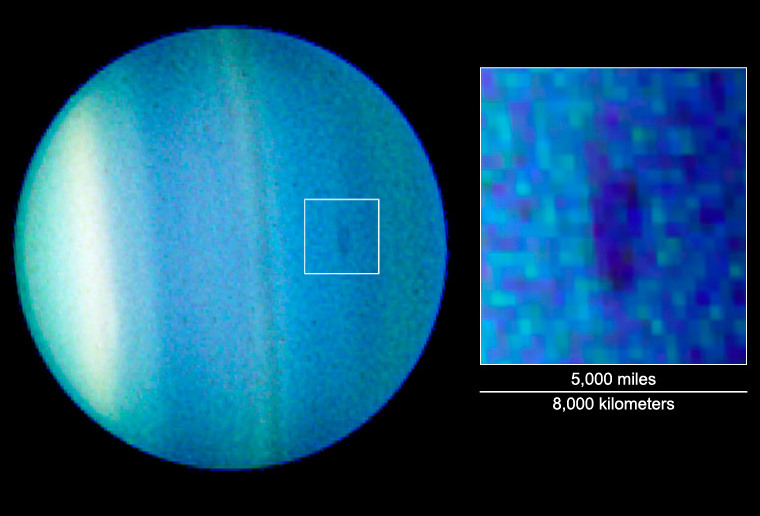[/caption]
Seen from space, Uranus looks bland, enshrouded in blue clouds. This blue-green color of the planet comes from the fact that the atmosphere of Uranus absorbs the red wavelengths of the visible spectrum, and prevents it from bouncing back out into space. All we can see are the blue-green photons reflected into space.
The atmosphere of Uranus is composted mainly of molecular hydrogen and helium. The third most abundant molecule after hydrogen and helium is methane (CH4). It’s the methane in Uranus’ atmosphere that absorbs the red spectrum visible light and gives it the blue-green color.
Uranus (and Neptune) have different atmospheres from the larger Jupiter and Saturn. Although their atmospheres are mostly hydrogen and helium, they have a higher proportion of ices, like water, ammonia and methane. This is why astronomers call Uranus and Neptune “ice giants”.
Astronomers believe that the atmosphere of Uranus can be broken up into three layers: the troposphere (-500 km and 50 km); the stratosphere (50 and 4000 km) and the thermosphere/corona extending from 4,000 km to as high as 50,000 km from the surface.
We have written many stories about Uranus on Universe Today. Here’s an article about how Uranus can be stormy, and another about a dark spot on Uranus.
Want more information? Here’s an article from Windows on the Universe about the atmosphere of Uranus. And here’s a Hubble photograph of Uranus’ atmosphere.
We have recorded an episode of Astronomy Cast just about Uranus. You can access it here: Episode 62: Uranus.

